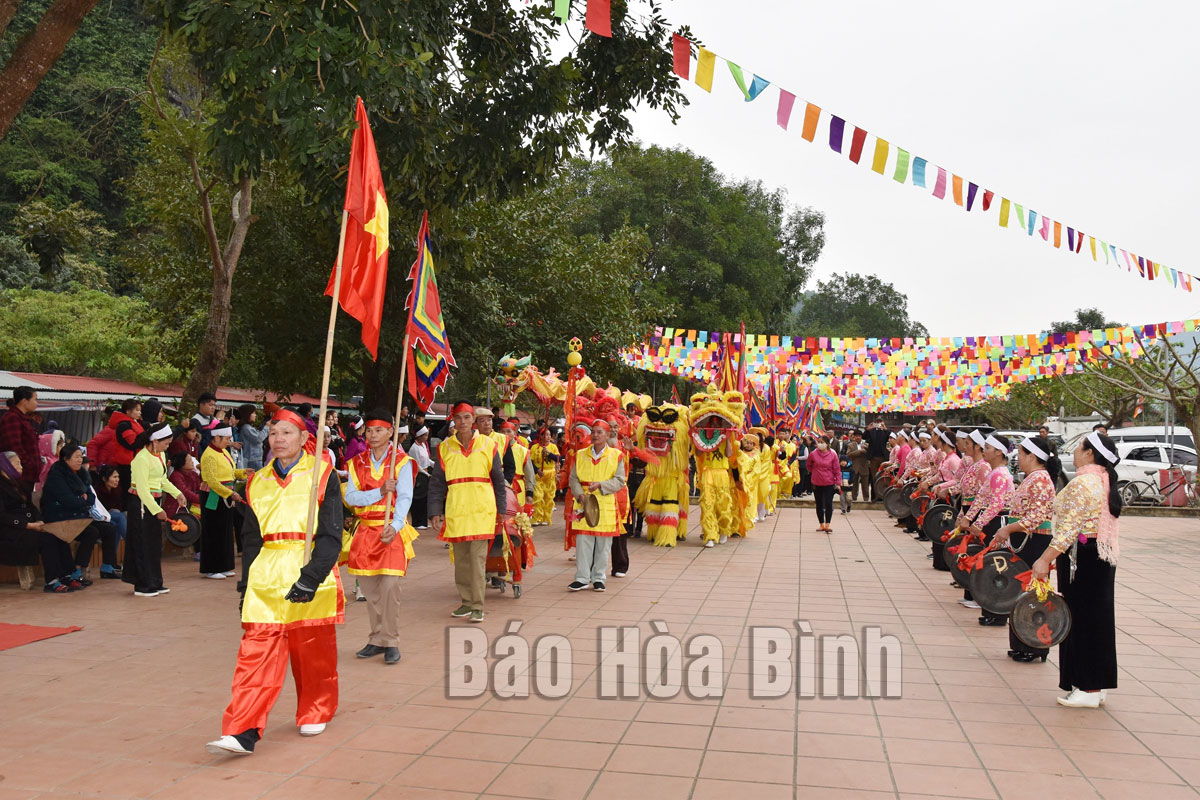(HBO) – The spring festival in Lac Thuy district remains cultural, spiritual beauty and reflects national traditions.
A lion and dragon dance at the Tien Pagoda festival in
Lac Thuy district draws of tourists.
Lac Thuy district sees a mix of Kinh and Muong
culture, with traditional festivals remaining intact. The Tien Pagoda festival
in Phu Nghia commune opens on the fourth day of the lunar year, drawing
thousands of Buddhist followers and tourists since the dawn of the day.
The festival at the Tien Pagoda, recognised as a
national relic site, will last until the end of the third lunar month. It is
considered a highlight of local tourism.
Meanwhile, residents in Chi Ne township and
communes of Lac Thuy district, and tourists flock to the Rem Temple in
residential area 5 on the 10th day of each lunar year to pray for good weather,
bumper crops, happiness, prosperity and peace. The temple won the provincial
cultural and historical relic site status in 2014.
Located in Nieng village, Hung Thi commune, the
Nieng Communal House was built in the 20th century. It was recognised as a
provincial cultural and historical relic site in 2012. Its festival takes place
on the 13rd and 14th days of the lunar year, during which locals pay respect to
the village saint and gods, and pray for good weather, bumper crops, good
health and happiness.
Lac Thuy has paid attention to preserving and
promoting traditional culture, as it has erected and maintained eight
traditional festivals. The locality has worked to control service prices at
tourist sites and festivals, and food hygiene.
Nguyen Thi Thanh Tam, head of Lac Thuy’s
culture-information bureau, said to better manage 2023 spring festivals, her
agency has stepped up the communication work to raise public awareness of the
Party’s guidelines and the State’s policies and laws on great national unity
bloc and the freedom of belief.
It has also coordinated with competent forces in
ensuring security and order, and traffic safety, fire-fighting, and relic site
preservation, she added.
According to Nguyen Ngoc Van, Vice Chairwoman of
the Lac Thuy district People’s Committee, the locality is home to six national
relic sites and 11 others winning the provincial recognition, along with many
caves and lakes, which is expected to turn tourism into an economic spearhead.
Therefore, she said, the district will intensify
the information work to promote its tourism products, focusing on cultural and
historical relic sites./.



